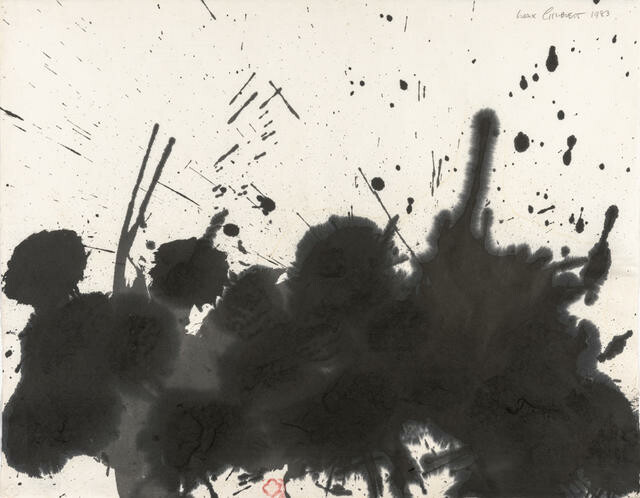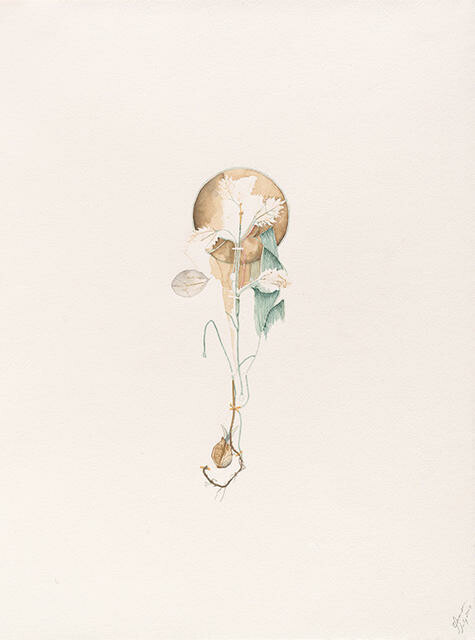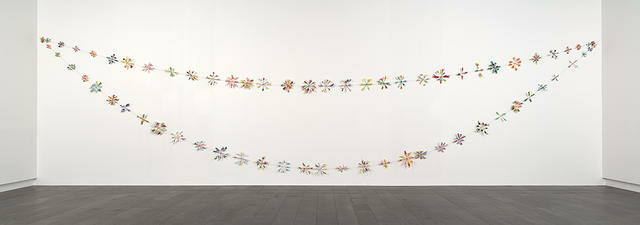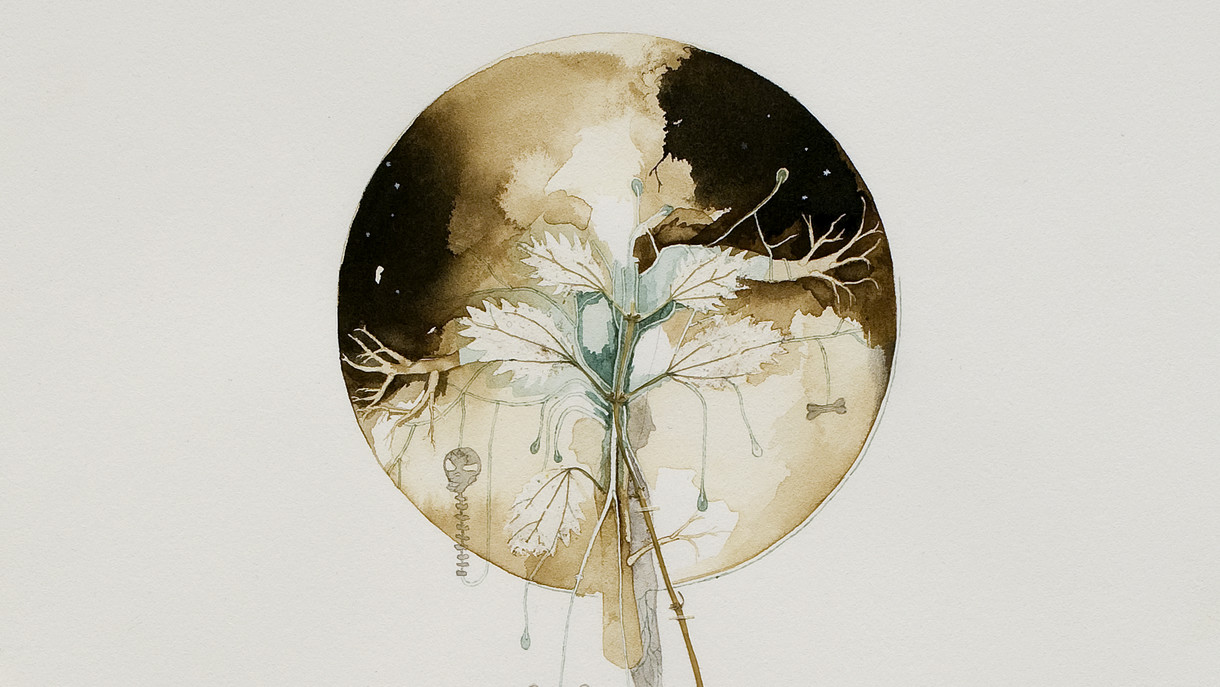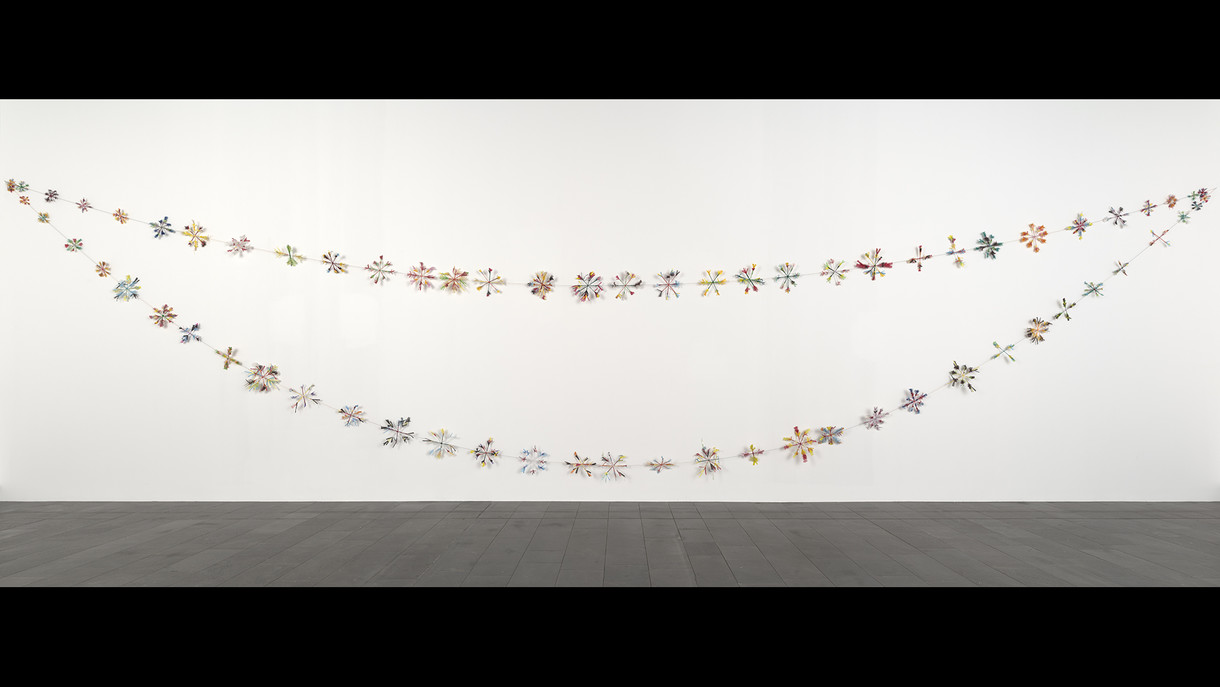B.
Keren Oertly on the cultural value of the floral form
Note
.
Tēnā koutou katoa,
Ki te whenua o Aotearoa, te tāiao ātaahua nei, tēnā koe
Ki ngā tātai amorangi i te takiwā nei, tēnā koutou
Ki te whare toi o Te Puna o Waiwhetū, tēnā koe
Ki te kaupapa, he whakanui ā ngā ringatoi ā te whenua nei, tēnā koe.
Ko wai au?
Ko Tōdi te maunga, ko Linth te awa, ko Glarnerland te whenua.
Nō Huiterangi, nō Marika, nō Aerana, nō Aotearoa ahau.
Ko Keren Oertly ahau.
Nō reira,
Ka haere te kawe rimurimu i te ara, ka mako pare.[1]
Tēnā tātou katoa.
I acknowledge the beautiful land of Aotearoa New Zealand, the genealogies in the Waitaha Canterbury region, Christchurch Art Gallery and how they are honouring the work of artists who call Aotearoa New Zealand home. My name is Keren Oertly, and I am of Swiss, American, Irish and Pākehā New Zealander descent.
Thank you to Hirini Moko Mead and Neil Grove for providing the pēpeha for this mihi, which exemplifies a reflexive relationship between nature and art, and opens this discussion.
Collection Works
Today, I’ll be reflecting on four floral works in the collection at Te Puna o Waiwhetū Christchurch Art Gallery to contribute to a broader conversation about the cultural value of florals.
Eileen Mayo, Summer Evening, 1967 (Norwich, UK; lived in Waimate (1962-65); Ōtautahi Christchurch (1965-1994), Aotearoa)
Max Gimblett, Peonies-1, 1983 (Aotearoa; America)
Zina Swanson, Untitled, 2007 (Aotearoa)
Ani O’Neill, ‘etu iti, 2006 (Cook Island (Ngāti Makea, Ngāti Te Tika); Ireland; Aotearoa)
A Brief Cultural History of Florals
Florals are one of the most consistent motifs deployed by artists over the centuries. The prevalence of florals in cultural production indicates their importance; their forms and functions signal the powerful effects that nature has on the structures we create and on the ways we think about ourselves. However, the ubiquity of florals can give rise to occasions of dismissal as superficial or sentimental subjects. Let’s examine some theoretical perspectives on florals to consider different registers of value, and how these might contribute to our reading of four floral works in the collection of Te Puna o Waiwhetū Christchurch Art Gallery.
Within the Western European tradition, British artist and art theorist Judith Rugg identifies that florals came to be associated with “consumption by women...in...‘feminine’ spaces.”[2] Designated as ‘decorative’, Rugg suggests florals became an indicator of a passive, interior, female world in the Industrial Age, contrasted with an active, external, ‘concrete’ male world.[3] These gendered, hierarchic and reductive perceptions of florals were influenced in part by the cultural effects of accelerated urbanisation and large scale manufacturing during this period. These processes dislocated cultural production from customary places of origin and accompanying contextual narratives. Nature was remade, writes American historian Celia Applegate, in an “urban-dwelling image” and involved a “reorientation of collective identity.”[4] Mass-production removed a previously defining element from creative production: “its presence in time and space, its unique existence at the place where it happens to be,” according to German philosopher Walter Benjamin.[5] In doing so, Benjamin argues that the production of art was brought into the praxis of politics.[6] Indeed, we see florals fundamentally tied to the wider political renegotiations of labour, resources, routines and expressions which took place across Europe in this period. These renegotiations created “alternative milieu” from new urban realities.[7] The relocation of florals into ‘feminine’ spaces “reinforced ideas about femininity in the domestic sphere,” proposes Rugg; but those who dwelled in these ‘feminine’ spaces also maintained a proximity with this potent nature language. As carriers of cultural memory, we might see florals as reminders of past “dwelling images”, turning surfaces into signs which continue to inform the present.
Swiss-British philosopher Alain de Botton rejects assumptions of sentimentality in relation to flowers, praising their symbolic value. The value of a flower is most readily recognised, de Botton says, by those who have experienced suffering: “[A] flower is even more lovely because the rest of life is so difficult. The difficulty of life has thrown into relief the beauty of modest things.”[8] This allusion to the difficulty of life evokes the memento mori tradition (Latin for ‘remember you must die’) with its roots in classical antiquity, and in particular the genre of vanitas painting (Latin for 'vanity'), prevalent in Europe in the sixteenth and seventeenth centuries, with many iterations appearing around the world. Within the vanitas genre, flowers were deployed symbolically to convey ideas of impermanence and decay; a reflection on the difficulties of existence and a perspective on the individual within a broader cosmology. However, de Botton overlays these stark reminders with a language of sensitivity, acknowledging the vulnerability that emerges through pain and loss and identifying the comfort and relief provided by “modest things” such as flowers.
By connecting environments and communities through their semiotic and symbolic charge, florals can also be seen to have structural value. As an expression of culture, florals participate in a determination of human identity and in doing so acquire a political force, which according to American cultural theorist Jeffrey J. Williams shifts florals from “secondary effect to primary cause.”[9] French philosopher Jacques Rancière likewise draws attention to the immanent relationship between politics and aesthetics,[10] proposing that what occurs in aesthetic space pervades political space and vice versa. American literary theorist Fabienne Moine identifies this political and aesthetic intersection in the work of women poets in the Victorian era, who regularly used floral motifs as political agents to defend common interests, resist power structures and engage with social issues such as women’s rights, urban poverty and the exploitation of the natural world.[11] “Looking to their immediate cultural environment,” Moine states, “these women reconstructed their world … questioning or undermining social practices that mould and often fossilise cultural identities.”[12]
As recurring motifs in Pacific cultural production, florals also signal indigenous knowledge systems and values sited in a Te Moana-nui-a-Kiwa Pacific Ocean context, and are active entities connected with pre-contact history, histories of colonisation and the continuing work of decolonisation. Writer and curator of Cook Island descent Stephanie Oberg states that “Pacific art flexes in and out of everyday life”[13]; and we see the presence of florals within that nourishing movement. As energetic narrators, florals participate in the telling of alternative stories by indigenous makers: a process of “ask[ing] and seek[ing] answers to our own concerns,” says Professor of Education and Māori Development Linda Tuhiwai Smith.[14] In doing so, florals operate within the research space of what Māori educationalist and activist Graham Smith names as “indigenous transforming praxis.”[15] By ‘talking back’, indigenous makers are involved in ‘knowing’ work, described by Tuhiwai Smith as “a recovery of ourselves, an analysis of colonialism and a struggle for self-determination.”[16] Addressing legacies of imperialism and colonial forgetting, indigenous makers utilise motifs such as florals to open and manage powerful frameworks of indigenous retelling and remaking, challenging Western knowledge systems, structures, assumptions and ideals.[17]
Considering florals as active, complex and persistent cultural operators which help to shape us and the world around us, let’s explore four works by Aotearoa New Zealand artists in the collection of Te Puna o Waiwhetū Christchurch Art Gallery, which have utilised florals to examine ideas of pain and loss, power and freedom and consider what these works might propose.
Eileen Mayo
We see ideas of temporality and impermanence in the vanitas tradition informing Eileen Mayo’s Summer Evening, a lino cut from 1967. A beam of acidic turquoise moonlight picks out two roses in a clear jug, turning one rose ghostly pale as if it is about to vanish. The other rose is scarlet in the shadow, with sharp midnight leaves. In the dark field of the upper right picture plane, Mayo delicately picks out a moth, body first and wings behind, hovering as if behind a window, searching for an entrance. A lace doily like a waning moon is pinned under the rose jug, and a suspense of loss grows within the printed planes. Similar undertones of pain or sadness emerge in other works printed by Mayo in the same year, such as Wounded Bird (colour linocut, 1967), giving rise to reflections about what the artist might have been experiencing. Perhaps we see in these prints an individual’s working model for processing grief. Here, in Summer Evening, a softly curved lace curtain holds a central position, while angular shadows lengthen. Yet balances of colour and composition offer a sense of quietude within this reflection.
Max Gimblett
Elsewhere, Max Gimblett subverts expectations of florals in ink drawing Peonies - 1 (1983), while simultaneously invoking the symbolic power of the vanitas genre. Here, balls of black sumi ink explode across dense cream paper, their energy tracing trajectories across and beyond the page. Their forms broady recall the lush, round shapes of cabbage roses, but the dark monochromes are suggestive of decay. Underneath the dense brushwork, there are echoes of earlier workings, of petal frills and curling leaves. Gimblett seems to collapse time and space, presenting at once the presence and absence of peonies; a simultaneity of past, present and future. The composition and tone is reminiscent of Robert Motherwell’s Elegy to the Spanish Republic No. 110 (1971), and by intersecting visually, Gimblett evokes a similar sense of the “inexorable cycles of life and death.”[18] Yet the heavy passages of thick ink in the lower register energise the delicate dashes and dots in the upper register, which read together like an abstract symphony.
Zina Swanson
Negotiations between light and dark continue with Zina Swanson’s mixed media watercolour Untitled, 2007. A slender plant cutting with five pale leaves resembling Rubus idaeus or red raspberry is encompassed by a smokey circle of dark umber and ochre washes. As the leaves reach the edge of the circle, they appear as winter branches, or perhaps roots. Suspended from these tendrils are delicate strings like spiderwebs which have captured elements of dismembered mortality: here, a skull and spine; there, bones. Each are tiny silhouettes which appear to be dancing, perhaps alluding to medieval European Danse Macabre or “dance of death” imagery. Behind the plant cutting, a shadowy figure is picked out in ambiguous connection with the specimen and body parts. Through Swanson’s use of tea and plant matter, there is a nod to occult practices, such as divination; also, of healing practices, such as the steeping of raspberry leaves to strengthen female physiology. The use of the circle, an ancient protective symbol, is evocative of magical rituals and supernatural creatures across many cultures, but suggests safety within the form. Swanson’s practice is described as “a window into the world of plant paranormal and our reciprocal relationship with nature.”[19] Here, the artist channels a shamanic energy, both emerging from and passing to the plant form, with enigmatic power.
Ani O’Neill
Ideas of freedom through form are channelled in Ani O’Neill’s large scale weaving installation ‘etu iti (2006). Sixty-five woven forms resembling stars, florals and leaves are scattered across two connected strands: the upper strand follows a gentle curve, the lower strand sweeping generously toward the ground. Suspended to the far left and right of a white wall, the strands open out like a celebration. The stylised forms occupy unset spacings across the two strands, at times close together, elsewhere further apart. Each woven assemblage is a singular work, complete in itself, yet connected to its neighbouring forms and the grouping as a whole. The work evokes a rhythm, a sense of both a meeting and a moving away, evocative of navigations, of trades, of ideas and encounters in energetic currents, circling these lengths and replenishing both the work and the space. The use of materials, both customary (such as kikau, feathers, raffia, shells, beads) and contemporary (such as sequins, videotape, recycled plastic, nylon, yarn), draws Western and Pacific histories and traditions into a single space, creating a new cosmos: weaving as a form of time travel, building a pathway from past to future. In this way, this work channels concepts of indigenous futurity[20], where the natural motifs made by O’Neill in collective practice with a group of schoolchildren in Cambridge, UK act as political agents signalling new spaces and expressions of authority, autonomy, and solidarity.
Visitor Host Karin Bathgate’s has recently discussed Ani O’Neill’s visual art practice on Youtube, so please do look up this video for further information.
Conclusion
In conclusion, we see that florals are active agents, functioning as knowledge carriers of previous ‘dwelling images’; as ready providers of perspective and relief; as powerful communicators between aesthetic and political spaces. The generous form of florals mirrors the generosity of nature throughout human experience, reminding us of our dependencies and our obligations. These four examples drawn from the collection at Te Puna o Waiwhetū Christchurch Art Gallery illustrate how artists have channelled their lived experiences in their floral production, helping us understand ways of being in the world and moving us to act. We might understand florals as portraits of the artists: at once, semiotic, symbolic, and structural markers for critical enquiries into what it means to be human. In these concentrated motifs, the artists offer us an opportunity to consider what emerges as significant.
Tēnā tātou katoa.
Sources
Applegate, C., A Nation of Provincials: The German Idea of Heimat (Oakland, CA: University of California Press, 1990), p77.
Behrouz, B., “The Flowers Resembling Chamomile / Infection: Manus Prison Syndrome” in No Friend but the Mountains, trans. Omid Tofighian (Sydney: Picador Pan Macmillan Australia, 2018).
Blickle, P., Heimat: A Critical Theory of the German Idea of Homeland (Suffolk, UK: Boydell & Brewer Publishers, 2004), p28.
Day, E., “How To Fail: Alain De Botton on embracing vulnerability in the age of Coronavirus” from podcast series How to Fail with Elizabeth Day, published 31 March 2020, available online at: https://howtofail.podbean.com/e/alain-de-botton-c19/. From 38:10.
Fricke, S. N., “Indigenous Futurisms in the Hyperpresent Now”, Journal of World Art, 9:2 (Taylor & Francis Online, 2019). Accessed at https://www.tandfonline.com/doi/abs/10.1080/21500894.2019.1627674, on 24/4/20.
Hinderlater, B. et al (eds.), Communities of Sense: Rethinking Aesthetics and Politics (Durham NC: Duke University Press, 2009).
Williams, J.J., The Ubiquity of Culture (Carnegie Mellon University, 2005), review essay accessed online at: http://pmc.iath.virginia.edu/issue.905/16.1williams.html, 21 April 2020.
Moine, F., Women Poets in the Victorian Era: Cultural Practices and Nature Poetry (London/New York: Routledge Taylor & Francis Group, 2016).
Moko Mead, H. & Grove, N., Ngā Pēpeha a Ngā Tīpuna (Wellington: Victoria University Press, 2017 edition), 924/2669.
Oberg, S., “A Perspective on Pacific Art in Christchurch”, Bulletin [online]: https://christchurchartgallery.org.nz/bulletin/183/a-perspective-on-pacific-art-in-christchurch, accessed 27 April 2020.
Rugg, J., “Fear and Flowers in Anya Gallacio”, in Fiona Becket & Terry Gifford (eds.), Culture, Creativity and Environment: New Environmentalist Criticism (Rodopi, 2007).
Smith, G., “Mai i te maramatanga ki te putanga mai o te tahuritanga: from conscientization to transformation,” Educational Perspectives of the College of Education, 37:1, p. 46-52.
Spector, N., “Robert Motherwell, Elegy to the Spanish Republic No. 110, 1971”, Guggenheim [online]: https://www.guggenheim.org/artwork/3047, accessed 19 April 2020.
Swanson, Z., “For Vivian” exhibition, The Dowse [online]: http://dowse.org.nz/exhibitions/detail/zina-swanson-for-vivian, accessed 23 April 2020.
Te Tauira Whiri i te Reo Māori Guidelines for Māori Language Orthography. Available online at https://www.tetaurawhiri.govt.nz/assets/Uploads/Corporate-docs/Orthographic-conventions/58e52e80e9/Guidelines-f or-Maori-Language-Orthography.pdf, accessed 1.5.20.
Tuhiwai Smith, L., Research and Indigenous Peoples: Decolonizing Methodologies, 2nd ed. (Dunedin, NZ: Otago University Press, 2012), p2.

